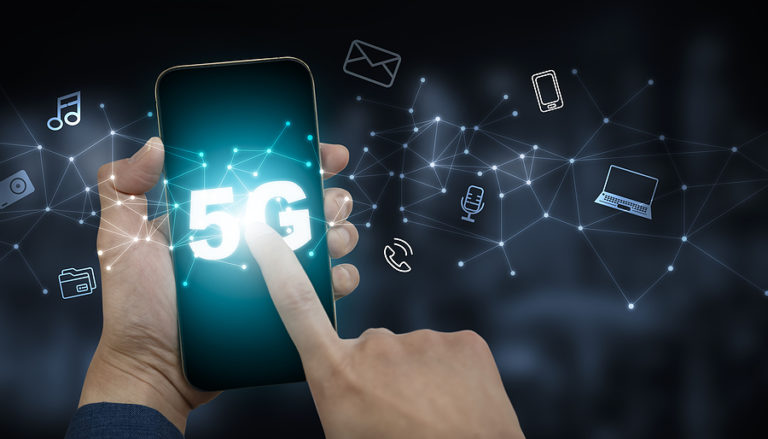Mobile technology is deeply ingrained in our everyday lives. It’s how we get a ride, order groceries while out on other errands, get directions, and even look up the name of the artist whose song is playing on the speakers in the elevator. More and more, mobile is also the primary way we get work done: responding to emails, participating in video calls, and accessing documents for review. Mobile devices and networks are quickly upgrading to provide the security needed now that we are accessing and sharing so much personal and sensitive information via these devices. With the introduction of 5G, the speed and ease of use of mobile apps will only increase, expanding their use and our reliance on them.
Stepping up Security
In an effort to make the inevitable sharing of data via mobile devices more secure, municipalities are building security into mobile access. The Los Angeles Metropolitan Transportation Authority has rolled out LA Secure, an app that alerts users to mobile security threats from websites or malicious links in real time so users can stop security threats before their device or information is compromised. For example, it includes phishing protection that allows users to screen a link sent to them, ensuring the legitimacy of the destination website. Also, if users try to connect to a rogue Wi-Fi network, the app alerts them of the security risk right away.
The U.S. Army is also rolling out pilot programs to increase the ability of soldiers to “bring your own device.” They are currently piloting BYOD use in small pockets to ensure security can be maintained on mobile devices and virtual desktops being used for logistics and training.
These security measures are critical as more and more of our personal information will live on our phones for everyday access.
Your Life on Your Phone
The Mississippi Department of Safety (DPS) is working on a program that would allow residents to store and display an up-to-date driver’s license or ID on their phones and use it as a legal form of ID. The Mississippi Mobile ID application ensures data security and privacy of personal information by only storing information with the state’s system of record and on the user’s device. It allows users to share only specific identity-related information — such as their birth date when buying alcohol — rather than all the information contained on a physical driver’s license.
Many countries, states, and cities are also exploring the use of digital vaccine passports. The technology and security to use devices to store and present these passports is readily available. The biggest hold-up is user trust. Fear of spoofing of records, leaking of private information and other security breaches feed skepticism of both citizens and the organizations that need to verify vaccine status.
GovWhitePapers.com has a host of resources that speak to mobile technology, security, and policy to help you shape how you and your organization can develop mobile strategies moving forward.
- An Overview of the Mobile Security Ecosystem The Federal CIO Council established the Federal Mobility Group (FMG) and tasked it with improving cybersecurity, governance, and accountability for federal mobile device usage and programs. This paper describes the security features of the mobile security management ecosystem (tools, technologies, products, and services) and aims to provide initial guidance that facilitates agencies’ development of enterprise-wide mobile security strategy and policy.
- National Security Implications of Fifth Generation (5G) Mobile Technologies The fifth generation (5G) of mobile technologies will increase the speed of data transfer and improve bandwidth, enabling new military and commercial applications. 5G for the military could additionally improve intelligence, surveillance, and reconnaissance (ISR) systems and processing; enable new methods of command and control (C2); and streamline logistics systems for increased efficiency, among other uses. As 5G technologies are developed and deployed, Congress may consider policies for spectrum management and national security, as well as implications for U.S. military operations.
- Mobile Application Single Sign-On: Improving Authentication for Public Safety First Responders On-demand access to public safety data is critical to ensuring that public safety and first responders (PSFRs) can protect life and property during an emergency. This public safety information, often needing to be accessed via mobile or portable devices, routinely includes sensitive information, such as personally identifiable information, law enforcement sensitive information, and protected health information. Because the communications are critical to public safety and may include sensitive information, robust and reliable authentication mechanisms that do not hinder delivery of emergency services are required.
- Private & Enterprise Networks Enterprises and enterprise networks are increasingly demanding more spectrum, more bandwidth and lower latency. Vertical industries each present their own set of unique requirements on communications networks and no one technology or operating model will meet the needs of the enterprise. Instead, the enterprise/ private network of the future can expect to be a multi-network that incorporates elements drawn from traditional enterprise models as well as from public mobile network models.
You can browse additional mobile-related assets through our search engine here:










